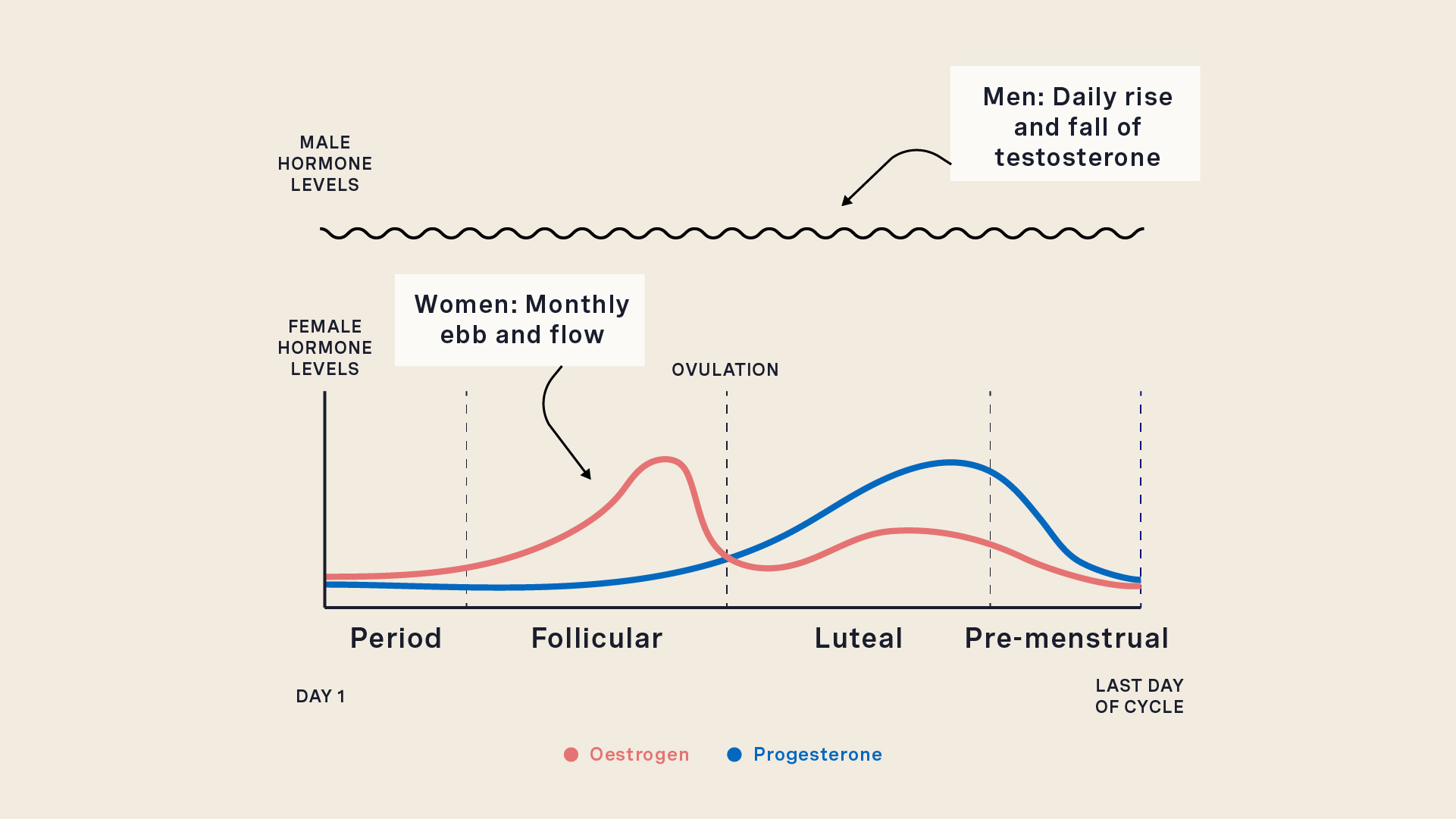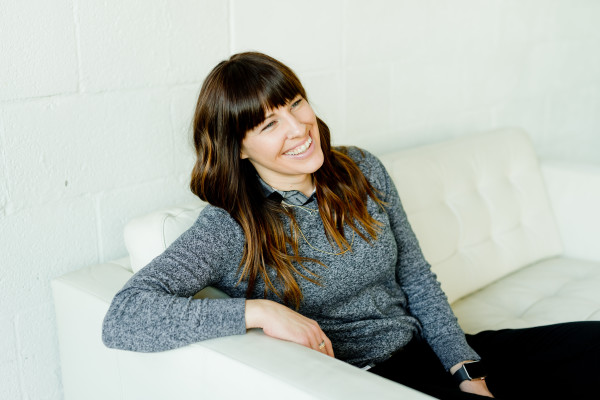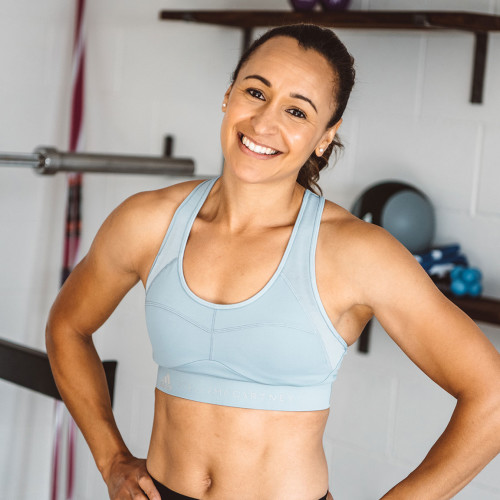Why are most fitness plans not designed for women?
2 years ago
Cycle syncing2 years ago
Cycle syncing
Did you know that the vast majority of fitness plans are designed with a man’s DNA in mind? Me neither, says health journalist Jane Druker
You’ve probably heard of the gender pay gap, gender employment gap and possibly even the gender sleep gap, but have you heard of the gender data gap? Well, it’s big, and means that almost everything you touch on a daily basis - from seat belts to smartphones – are almost certainly built on data from male bodies.
Here, we discover what the data gap means for women, then find out how Jennis is redressing the balance when it comes to women’s fitness.
In a nutshell, the gender data gap is the fact that the vast majority of data we have is based upon the male body, and ‘normal’ is often a proxy for ‘male’.
The problem with this is that because most products we use on a daily basis are created using data from male bodies, they aren’t as effective for women.
Take seatbelts and airbags in cars. Because the crash test dummies used to test car safety features have the dimensions of an average man, they often don’t work for women’s bodies because women are generally physically smaller.
This means that despite the fact that men are more likely to crash their car, women are 47% more likely to suffer a serious injury.
Looking at smartphones, the average smartphone is now 5.5 inches. While most men can fairly comfortably use a device one-handed, the average woman’s hand is not much bigger than the handset itself.
Then there’s the software featured inside. When Apple launched its health-monitoring system in 2014, it boasted a comprehensive health tracker. It could track blood pressure; steps taken; blood alcohol level; even copper intake. But, as many women pointed out at the time, they forgot one crucial detail: a period tracker (which was added 9 months later after a backlash in the media ).
Men’s hormones follow a pretty standard and repetitive daily pattern, whereas women have a 28-29-day cycle of fluctuating hormones
When it comes to physical fitness, “because only 4% of sport and exercise science studies are exclusively done on women, most mainstream fitness programmes don’t consider the role of female hormones when it comes to training and fitness,” says Jennis physiologist, Dr Emma Ross.

“The problem here is that men’s hormones follow a pretty standard and repetitive daily pattern, where testosterone rises in the morning and drops again in the evening. Women, on the other hand, have a 28-29-day cycle of fluctuating hormones,” she continues (see graph above).
For any woman who has tried to follow the same fitness programme as a male friend or partner, you may have felt frustration that your male workout buddy can see results quicker when you’re doing exactly the same workout activity.
According to Dr Emma Ross, the hormonal environment inside a woman's body could be one of the reasons why.
Jess Ennis-Hill created Jennis to help women get smart with what's happening hormonally. "Using innovative CycleMapping technology, each day the app identifies where you are in your cycle," says Jess, "then serves up 10-40-minute workouts to suit your hormones, symptoms and energy levels.
"We also share daily insights about how to eat, drink and train smart, so that you keep learning about your body and keep getting the most out of your fitness."
Dr Emma , who helped Jess develop the cycle syncing programme, has a whole host of studies that support this way of working out, with one of the more jaw-dropping facts being that women can build up to 15% more lean muscle if you do more strength workouts in the second phase of your cycle. For anyone keen to maintain or build muscle mass, but short on time, this is incredible to know.
Another water-cooler fact is that you can burn more fat in phase 3 of your cycle by doing more steady state work, such as LISS, gentle runs, walking and swimming. Tick.
Then there’s the fact that certain styles of yoga can alleviate abdominal cramps, which is amazing to know when you are in your period.

"I'm mindful that a lot of women are busy juggling lives, family, work - you name it. So, the big thing for me was to make the principles of cycle syncing acessible, the workouts short but effective and the results easy to track," says Jess.
“With Jennis and our CycleMapping technology, we give you an easy to follow daily fitness plan mapped to your cycle. Plus, we make the science relevant so it’s easy to see why we’re suggesting HIIT one day, rest the next and LISS or yoga the day after that.”
Because sessions are mapped to your hormones and energy levels, we’re seeing our women workout more consistently every month, which helps with both body positivity and gains.
Adapting your fitness to the hormonal changes that take place across a menstrual month (also know as: cycle syncing) obviously makes complete sense on paper. But how are busy working women finding this new way of working out?
“Every app out there talks about helping you get fitter. And we obviously help our women build both strength and cardio gains,” says Jess. “But the really exciting thing for me is the less obvious benefits of training in this way.
“Because sessions are mapped to your hormones and energy levels, we’re seeing our women workout more consistently every month, which helps with both body positivity and gains. Then there are the psychological benefits, where our women are telling us that they feel less guilty about taking rest days and are starting to understand their symptoms trends.”

If the thought of deciphering the cycle syncing and hormone science fills you with dread, the good news is that the Jennis app makes it easy to incorporate this way of working out into busy daily lives by giving you a choice of daily workouts designed to make the most of what’s happening.
What’s happening: Hormones flatlining
How you feel: Fatigue, cramps, low energy
Fitness: Get smart with symptoms
In the Jennis app: Cramp-relieving yoga, energy lifting stretches, smart strength and more
What’s happening: Oestrogen rising
How you feel: Sociable, confident, motivated
Fitness: Push for gains
In the Jennis app: Muscle-building HIIT, strength and HIIT runs.
What’s happening: Progesterone takes over
How you feel: Chilled, anti-anxiety, bloat
Fitness: Go slow and strong
In the Jennis app: Fat-burning LISS, yoga, steady state, strength.
What’s happening: Hormones nose-dive
In the Jennis app: Mood swings, irritation, emotional
Fitness: Choose feel-good fitness
In the Jennis app: Energy lifters, anxiety shakers, bloat beaters.
 Cycle syncing
Cycle syncing Perimenopause
Perimenopause Perimenopause
Perimenopause Perimenopause
PerimenopauseSign up to learn everything you need to know about CycleMapping, plus how you can live better and feel better through optimising your fitness to you.
This website uses cookies to ensure you get the best experience on our website. Learn more

Sign up for the very latest news on women's fitness, health and hormones, plus be the first to receive exclusive offers and extras